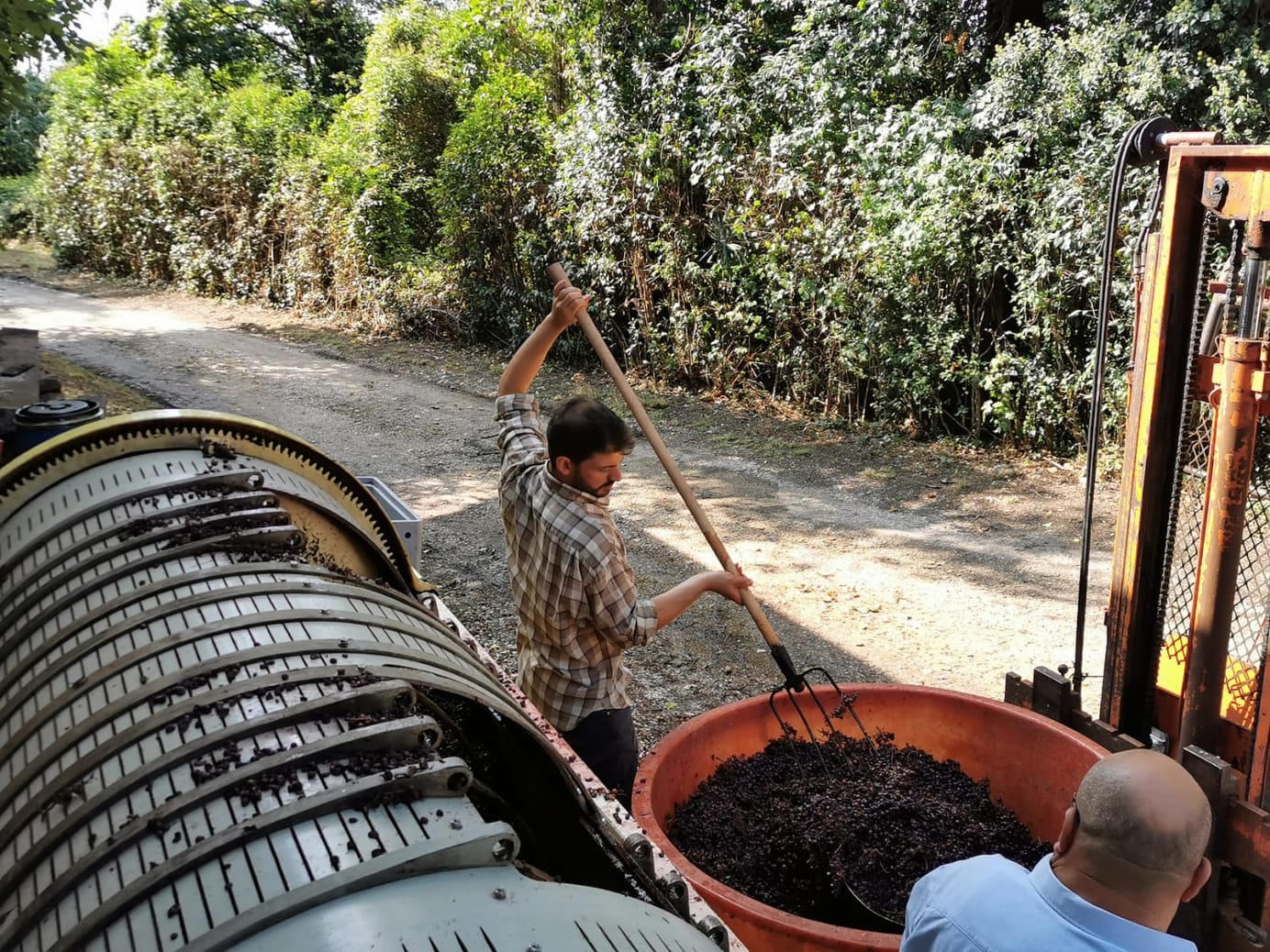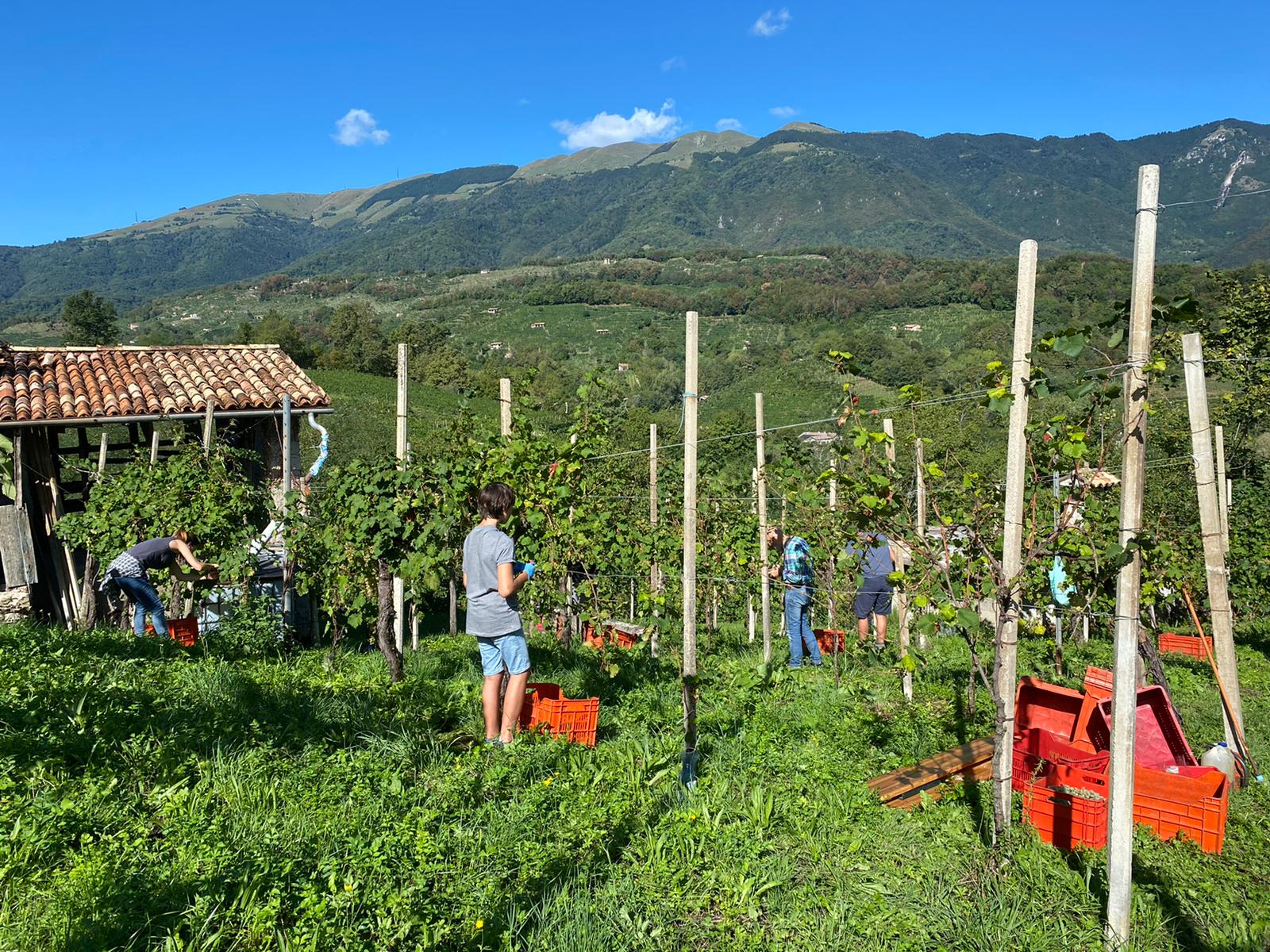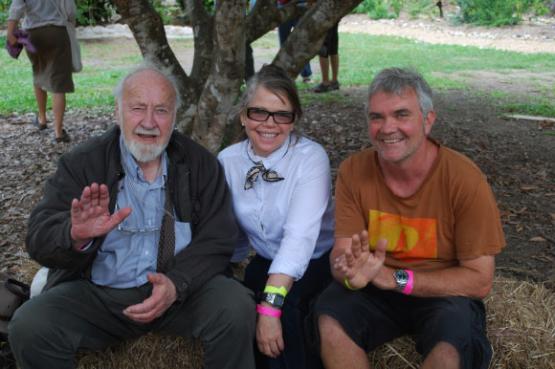
Meet the winemaker: Costadilà
4 min read
Costadilà is a small organic farm founded by Ernesto Cattel who sadly passed away in 2018, and is now run by Martina Celi and Alex della Vecchia. The estate sits on the hills north of Venice, where Prosecco di Conegliano e Valdobbiadene is historically produced. They ferment their wines in bottle, according to local tradition.
We spoke to Martina and Alex after including one of their wines in our selection for RAW WINE Club. We hope you enjoy reading our conversation.
Can you tell me about your background - how you came to be a winemaker, and how you became involved in Costadilà?
Alex: I started out working with my grandfather on his farm in the mountains, where we made wine and had cows. I lived in Belluno in the Dolomites, and in 2010 planted some Pinot Noir to start selling the wine from my farm, under the label Pedecastello. I met Ernesto from Costadilà when I called in to see if I could vinify my grapes there. Then when Ernesto passed away, I continued making Costadilà wine.
Martina: I studied art restoration originally, so my background isn't in farming or wine. I came across Costadilà when I came to the Veneto region with some friends. We came across the farm and met Ernesto, and then later I started working there - mostly helping in the vineyard to learn pruning, not as my full-time job at first, just whenever I had time. But I began to cultivate an interest in the work. I got to know Ernesto better and started working more across the vineyard, and I'm still here! It was a passion that started naturally, not from having a background in wine. I loved the learning aspect - of course, I don't know what it's like to study agriculture in school, but through my work on the farm with Ernesto, I learned a lot about plants, how they grow, how each year is different and all the different factors that go into the end product. It was all very new for me as I came from a city, but I saw that I could learn a lot and I feel richer here, more full.
And what about your style of farming and producing - why organic?
Martina: When people ask me, 'What is natural wine?', I always say that as a minimum, it has to come from organic grapes.
Alex: They're also important for being able to work well in the cellar. When you have organic grapes, you don't need additives, as you can start fermentation with the yeast from the grapes. So making natural wine, it's important to first work organically and biodynamically.
What else do you produce on the farm?
Alex: We have local breeds of sheep and cows for meat, and we keep goats to help maintain the vineyard. Having the animals here is important for improving the biodiversity of the farm, and to create a cyclical, complete farm.
Martina: It's also more fun, working on the farm with animals.
Can you describe the vineyard and its surroundings?
Martina: We are in the area of San Lorenzo, in the hills of Vittoria Veneto, where you find prosecco. It's coastal and the hills cover a big area. The best vineyards are usually along the rivers that you find in the hills. We have vineyards at both the top and further down - the soil at the top is more calcareous, and further down we have more clay and marl. They are very different. We name the wines after the different altitudes (i.e. 280m above sea level), as it's something Ernesto started. We now have more vineyards, so the grapes we use for each of the wines aren't 100% from those altitudes, but in the same soil.
Alex: It rains quite a lot here, and in the winter and spring we sometimes have problems with freezing on the flatter areas, so it's better to plant vines on the hills. It's not a typical mountainous climate or Mediterranean climate, it's colder than Venice.

Is the wine you make typical of the historical Prosecco region that you're in? Is there anything you do differently to other winemakers where you are?
Alex: It's typical in the sense that we use the historical method for making prosecco. Until 1970, people made prosecco by doing the second fermentation in the bottle. People stopped doing this and moved over to the Charmat method, where you do the second fermentation in stainless steel, as it's cleaner, easier and faster. You can harvest in September and bottle in December. With our method, you harvest in September, ferment until spring and then do the second fermentation in the bottle, and sell one year later.
Martina: Ernesto also started macerating the wine with skin, but people here don't really like it. An orange wine with sediment is seen as a poorer product, so it was very difficult at the beginning to talk about this wine. But things are changing. Skin maceration still isn't so popular here, but in the last couple of years, more makers have started refermenting in the bottle.
Alex: And skin contact is better for making wines that age well, because of the tannins.
Visit Costadilà's RAW WINE profile to learn more about the winery and discover which RAW WINE fairs they're pouring at soon.


